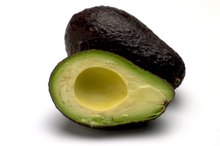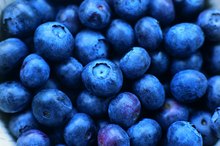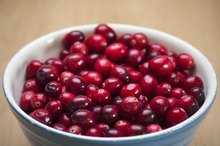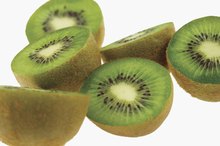Omega-3 fatty acids, also known as polyunsaturated fatty acids, are only found through diet, as your body will not produce them on its own. Vital for brain health and normal body development, these essential fatty acids have also been linked with cardiovascular health. Seafood and fish such as salmon, tuna and halibut are rich in omega-3 fatty acids, but so are berries, including strawberries, blackberries, raspberries and blueberries.
Blackberry Breakdown
Blackberries are one of the fruits richest in omega-3 fatty acids 2. A 1-cup serving of blackberries contains 135 milligrams of omega-3 fatty acids per serving. The polyunsaturated fat content of the same serving size is almost half a gram, making up the majority of its fat content. In addition to being rich in omega-3 fatty acids, blackberries also contain no cholesterol and only 1 milligram of sodium per serving.
- Blackberries are one of the fruits richest in omega-3 fatty acids 2.
- A 1-cup serving of blackberries contains 135 milligrams of omega-3 fatty acids per serving.
Jammed With Fatty Acids
Fatty Fruit
Learn More
With their plump, dusky-hued, red fruit, raspberries are a fragrant treat that can be eaten raw or cooked 4. With only 64 calories per 1-cup serving, there is a little less than 1 gram of total fat, of which half of that is polyunsaturated. A 1-cup serving contains 155 milligrams of omega-3 fatty acids, no cholesterol and only 1 milligram of sodium.
- With their plump, dusky-hued, red fruit, raspberries are a fragrant treat that can be eaten raw or cooked 4.
- With only 64 calories per 1-cup serving, there is a little less than 1 gram of total fat, of which half of that is polyunsaturated.
Strawberries -- Healthy Pickings
Whole strawberries are most commonly eaten raw, although they can also be used for jams and jellies 5. They are less commonly used in sauces than either blackberries or raspberries. A 1-cup serving of strawberries contains even fewer calories than raspberries, with only 49 calories per serving, and only half a gram of fat. A single serving only contains a little under 99 milligrams of omega-3 fatty acids, however. A 1-cup serving of strawberries also contains no cholesterol and 2 milligrams of sodium, although it has almost 150 percent of your daily value of vitamin C, with a little under 90 milligrams per serving.
- Whole strawberries are most commonly eaten raw, although they can also be used for jams and jellies 5.
- A 1-cup serving of strawberries contains even fewer calories than raspberries, with only 49 calories per serving, and only half a gram of fat.
Something Blue
Fruits That Contain Glycolic Acid
Learn More
Still a source rich in omega-3 fatty acids, blueberries contain less per serving than the other berries. A 1-cup serving of raw blueberries has a little over 85 milligrams of omega-3 fatty acids, but, like strawberries, it only contains half a gram of total fat 56. A 1-cup serving has 84 calories and no cholesterol. It also has only 1 milligram of sodium per serving. Blueberries can be eaten raw or cooked and are able to be purchased year-round as a frozen fruit 6.
Related Articles
References
- University of Maryland Medical Center: Omega-3 Fatty Acids
- Nutrition Data: Foods Highest In Omega-3 Fatty Acids Fruits and Fruit Juices
- Nutrition Data: Blackberries, Raw
- Nutrition Data: Raspberries, Raw
- Nutrition Data: Strawberries, Raw
- Nutrition Data: Blueberries, Raw
- None
- None
- None
- None
- None
- None
- None
- None
- None
- None
- None
- None
- None
- None
- None
- None
- None
- None
- None
- None
- None
- None
- None
- None
- None
- None
- None
- None
- None
- None
- None
- None
- None
- None
- None
- None
- None
- None
Writer Bio
Marie Dannie has been a professional journalist since 1991, specializing in nutrition and health topics. She has written for "Woman’s Own," the "Daily Mail," the "Daily Mirror" and the "Telegraph." She is a registered nutritionist and holds a Bachelor of Science degree with honors in food science from the University of Nottingham.









